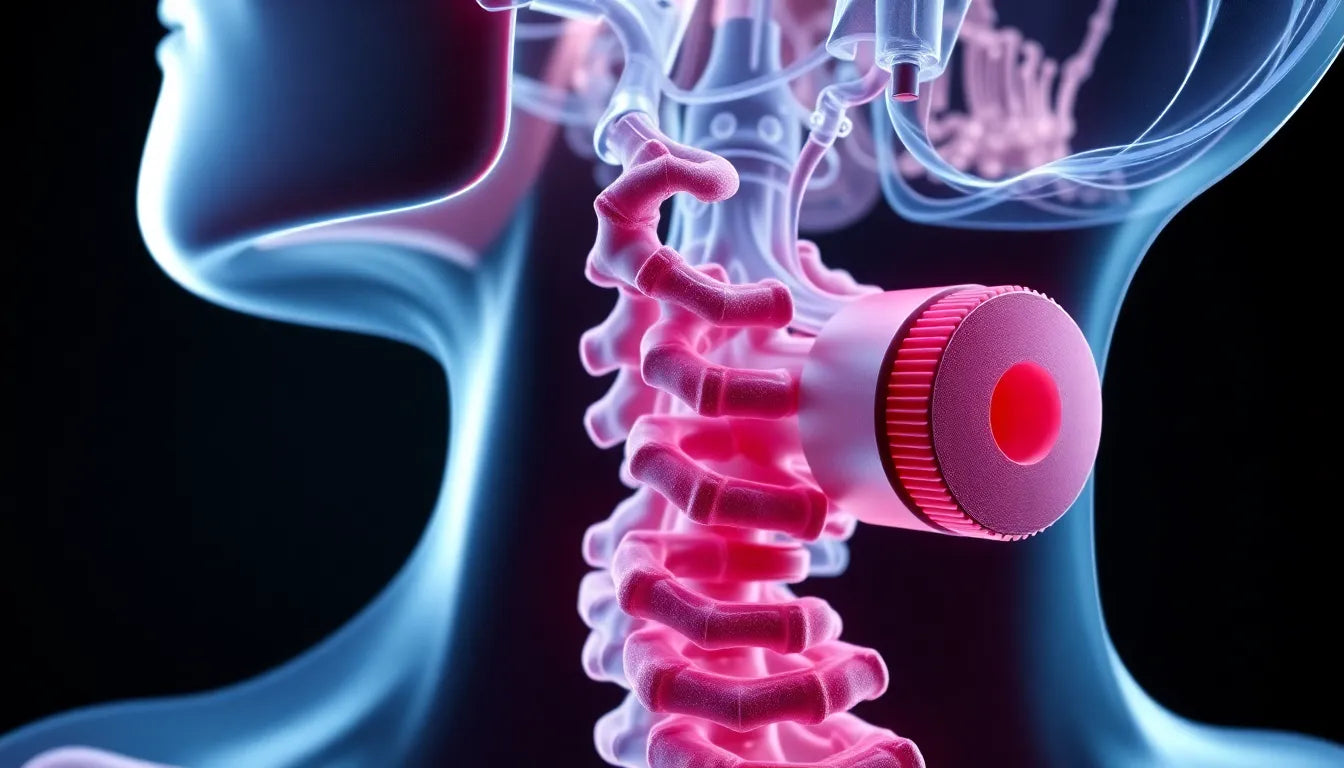Understanding whether a herniated disc can heal is a common concern for many dealing with this painful condition. A herniated disc occurs when the soft, gel-like center of a spinal disc pushes through a crack in its tougher exterior casing. This can result in irritation or compression of nearby nerves, leading to symptoms such as pain, numbness, tingling, and limited mobility. These symptoms can vary in intensity, often affecting the lower back or neck, and can significantly impact daily activities.
the healing journey of a herniated disc
The body has a remarkable ability to heal itself, and this includes herniated discs. The healing process is typically gradual, with the body working to reduce inflammation and repair the damaged area. It is essential to understand that this journey is not instantaneous; it involves different stages that can span several weeks to months. Recognizing these stages can help set realistic expectations and provide insight into the recovery timeline.
Initially, the acute phase involves significant pain and inflammation, which can last from a few days to a couple of weeks. As the body progresses through the healing stages, symptoms often begin to diminish, and mobility gradually improves. Understanding this natural progression is crucial for anyone dealing with a herniated disc, as it highlights that recovery is a process, not an event.
setting expectations for recovery
One of the most reassuring aspects of managing a herniated disc is that the majority of cases heal over time without the need for surgical intervention. This natural recovery can often occur within 4 to 12 weeks, depending on various factors such as the severity of the herniation and the individual's overall health. However, it's important to note that some people may experience a longer healing period, especially if the herniation is severe or other health conditions are present.
Each person's healing journey is unique, influenced by factors like age, physical condition, and lifestyle choices. While some may find relief quickly, others may need more time and patience. It's crucial to maintain a positive outlook and adhere to recommended treatments and lifestyle adjustments to support the healing process.
In conclusion, while a herniated disc can be a challenging condition, understanding the body's natural healing abilities and setting realistic expectations can make a significant difference in managing recovery. By recognizing the stages of healing and acknowledging individual variability, those affected can better navigate their journey towards recovery.
stages of healing for a herniated disc
The healing process of a herniated disc unfolds in several stages, each characterized by distinct symptoms and recovery milestones. Understanding these stages can provide clarity and reassurance during the recovery journey.
acute/inflammation stage
The initial stage, known as the acute or inflammation stage, typically lasts from 1–2 days up to two weeks. During this period, individuals often experience intense pain, inflammation, and significantly limited mobility. The body's immediate response is to protect the affected area, which results in swelling and discomfort. To manage symptoms effectively, it is crucial to rest and avoid activities that may exacerbate the pain. Applying ice or heat therapy can help reduce inflammation and provide temporary relief. Pain management strategies, including over-the-counter medications or prescribed painkillers, may also be necessary to improve comfort during this stage.
progressive improvement stage
As the body begins to heal, the progressive improvement stage sets in, usually spanning from 2 to 6 weeks. During this phase, individuals often notice a gradual reduction in pain and an increase in mobility. This improvement is a positive sign that the body is actively repairing the damaged disc. Engaging in gentle stretching exercises and light physical therapy can support the healing process by promoting flexibility and strength in the surrounding muscles. It is essential to listen to the body and avoid overexertion, as pushing too hard can lead to setbacks.
plateau/stabilization stage
The final stage, known as the plateau or stabilization stage, occurs between 6 and 12 weeks after the initial injury. By this time, most individuals experience significant improvement in symptoms, although occasional flare-ups may still occur. The focus during this stage is on maintaining progress and preventing future issues. Continued strengthening exercises and posture correction are vital to stabilize the spine and support long-term recovery. Incorporating core-strengthening exercises can also enhance spinal stability and reduce the risk of future herniations.
factors influencing the healing process
Several factors can influence the healing timeline of a herniated disc. Age plays a significant role, as younger individuals tend to heal more quickly than older adults. Overall health and lifestyle choices, such as smoking and maintaining a healthy weight, also impact recovery. The severity of the herniation and the individual's activity level can further affect the duration and success of the healing process. Maintaining a healthy lifestyle, including a balanced diet and regular exercise, is essential to support the body's natural healing abilities.
returning to activities after a herniated disc
Gradually reintroducing daily routines and light activities is a crucial part of the recovery process. It is important to listen to the body and avoid activities that cause pain or discomfort. For most individuals, resuming intense exercise or physically demanding tasks is recommended after 8–12 weeks, when the risk of re-injury is lower and symptoms have significantly improved. Consulting with a healthcare provider or physical therapist can provide personalized guidance on when and how to safely return to specific activities.
In conclusion, while the healing journey of a herniated disc can be challenging, understanding the stages of recovery and the factors that influence healing can empower individuals to actively participate in their recovery process. By adopting a proactive approach and making informed lifestyle choices, individuals can support their body's natural healing abilities and reduce the risk of future disc herniations.
signs of healing and long-term management
As you progress through the recovery stages of a herniated disc, recognizing signs of healing can provide reassurance and motivation. A notable reduction in pain levels, decreased numbness or tingling, and improved mobility are positive indicators that the body is mending. These changes often signify that the inflammation is subsiding and the disc is stabilizing.
Long-term management is crucial to prevent recurrence and maintain spinal health. Ergonomic aids, such as supportive chairs and proper lifting techniques, play a vital role in reducing strain on the spine. Consistent physical therapy and posture maintenance are essential to reinforce spinal stability and flexibility. Incorporating exercises that strengthen the core muscles can further protect the spine from future injuries.
outlook and when to seek medical advice
While most herniated discs resolve without surgical intervention, it's important to monitor symptoms and consult a healthcare professional if necessary. Persistent or worsening symptoms, such as severe pain, loss of bladder or bowel control, or progressive weakness, require immediate medical attention. These could indicate serious complications that may need specialized treatment.
The overall outlook for individuals with a herniated disc is generally positive. With time, patience, and proper care, most people experience significant improvement and can return to their normal activities. However, maintaining a proactive approach to spinal health and adhering to recommended lifestyle changes can enhance recovery and reduce the risk of future episodes.
frequently asked questions
How long does it usually take for a herniated disc to heal?
Most herniated discs heal within 4–12 weeks, but in severe cases, recovery can take up to 6–12 months. The timeline varies based on individual health factors and the severity of the herniation.
Can a herniated disc heal without surgery?
Yes, the majority of herniated discs heal naturally over time without surgical intervention. Conservative treatments, such as physical therapy and lifestyle modifications, are often effective in managing symptoms and supporting recovery.
What activities should I avoid during recovery?
During recovery, it's important to avoid heavy lifting, high-impact sports, and any activity that exacerbates pain. Always consult with a healthcare provider before resuming strenuous activities to ensure they are safe.
What are the signs that my herniated disc is improving?
Signs of improvement include reduced pain, decreased numbness or tingling, and increased mobility. These changes suggest that inflammation is subsiding and the disc is stabilizing.
How can I prevent future herniated discs?
Preventing future herniated discs involves maintaining good posture, engaging in regular exercise, and using ergonomic aids. Additionally, avoiding smoking and maintaining a healthy weight support overall spinal health.
Sources
- Spine MD. "Herniated Disc Healing Stages and Recovery."
- Advanced Spine Center. "Understanding the Herniated Disc Recovery Process."
- HealthCentral. "How Long Does It Take for a Herniated Disc to Heal?"
- ADR Spine. "Stages of Herniated Disc Recovery."
- MoreGoodDays. "Patient Experience with Herniated Disc Recovery."
- Mayfield Clinic. "Self-Care for Herniated Discs."
- Cleveland Clinic. "Herniated Disc Overview and Healing Time."


















